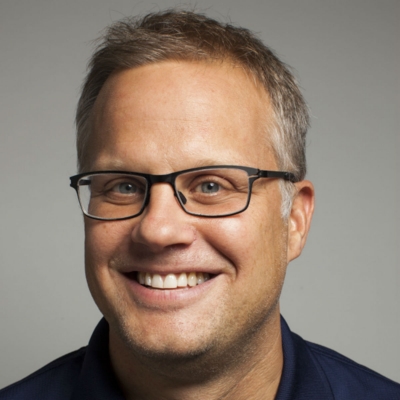As Procter & Gamble Co. celebrates its 175th anniversary, there's little doubt the consumer-packaged-goods giant is at a crossroads. And part of that involves getting back to basics -- or, perhaps, back to the future.
P&G Global Brand-Building Officer Marc Pritchard has spent much of his first four years as chief marketer talking about purpose, digital and social media, and new creative freedom for agencies. He also reorganized his communications ranks into a multidisciplinary group of marketers, market researchers, PR people and design managers.
Now, he's talking a lot more about the age-old P&G business model, mass awareness, product-superiority claims and a brand-management system that , while it's evolved, works much like it did in days of yore.
The focus on the business model, he acknowledges, is a response to a "tough year." But in an interview, he said a mix of progress on the digital and creativity fronts, combined with a renewed focus on the fundamentals, can keep P&G on track.
Ad Age : How has the brand-management system evolved from when it started a little more than 80 years ago?
Marc Pritchard: What's the same is that we have a proven business model that has worked over time.
We really get deep consumer insights about what people need and want. We translate that into superior-performing products. Then we communicate that superiority, which is where the brand manager comes in.
We do that through creative big ideas that will articulate the superior benefit and give proof of performance. That's through a claim, demonstrations and visuals. That's really important because of the business we're in: everyday products people don't think about a lot. They're in the market a lot. The prices aren't that much, so they can switch quite a bit. So you have to be noticeably superior and tell people what that product is .
And then we create mass awareness. And that leads to retailers getting behind us, because if we're out there with mass awareness with the No. 1 or 2 brand in the market, they need to get behind us. We generally focus on making sure we can invest in advertising so we can keep that going. We price at the level to give people a superior value. That model really has worked for 80 years.
Ad Age : Is the "one brand, one manager" notion outdated?
Mr. Pritchard: We are now going pretty much back to the "one brand, one manager" approach as part of our new reorganization. We actually found our business was getting too complex because we had too many handoffs. What we've got now is in the local markets a brand manager who's bringing it together.
Ad Age : Are brand managers actually marketers, or are they really general-manager trainees?
Mr. Pritchard: They are a little bit of both.
First and foremost, we expect our brand managers to be great at marketing. That's a foundational element. The brand is the embodiment of all the value you're trying to create for the consumer -- the product, package, insights into how you create the benefit, the trust you're creating through the brand name, its history and heritage, the promises you make through advertising. The price.
What the brand manager has to do is take all those elements and integrate them into a business plan that will take that brand and make sure it's going to get where we want it to. So the brand managers are the generalists. They're working with the R&D people who are the specialists at creating brilliant products and the market researchers who are good at creating insights. The salespeople who are good at selling.
The brand managers specialize in the communication. ... They're the ones who have to articulate the vision for the brand. They have to know the brand better than anyone else, and the consumer better than anyone else.
We develop people from the very beginning to be great at marketing ... and ultimately become associate marketing directors and marketing directors. It's really then that we start identifying who are the real general-management candidates, and that 's about 10% of our marketing ranks.
Ad Age : Is P&G led by marketers as much as ever, or do you see other functions playing a bigger role?
Mr. Pritchard: The marketing function still tends to be the biggest source of general managers who progress to presidents and senior leaders. But there are a lot of people from different parts of the company who come from different functions to general managers. But in order to become a general manager and president, being deeply steeped in marketing is critical.
Ad Age : You started in finance, right?
Mr. Pritchard: I did. I also managed a manufacturing plant. But ultimately a manager said, "We need to get you into marketing." You need to get that skill. My question was why? And their answer was, "We sell brands. That's the unit of value for the company. And you need to understand that in order to be effective."
Ad Age : What are the best things P&G has done on your watch as chief marketer? And the worst?
Mr. Pritchard: I'm proud of the accelerations of social and digital and even the elevation of combining that with public relations. ... I'm proud of some of the really breakthrough creativity I've seen on some of the brands. Old Spice continues to be very creative. Febreze is very creative. I like what I've just seen on SK-II and Vicks -- some really good work. And I'm proud of the Olympics. I think we've broken some ground there.
I wish we'd been more focused on the superiority of our products faster. We have a lot more superiority and competitiveness than we've been putting out there, and I want to push that more. I want to combine creativity and competitiveness.








